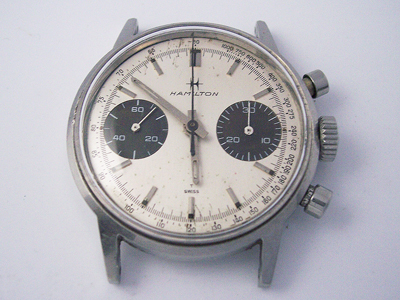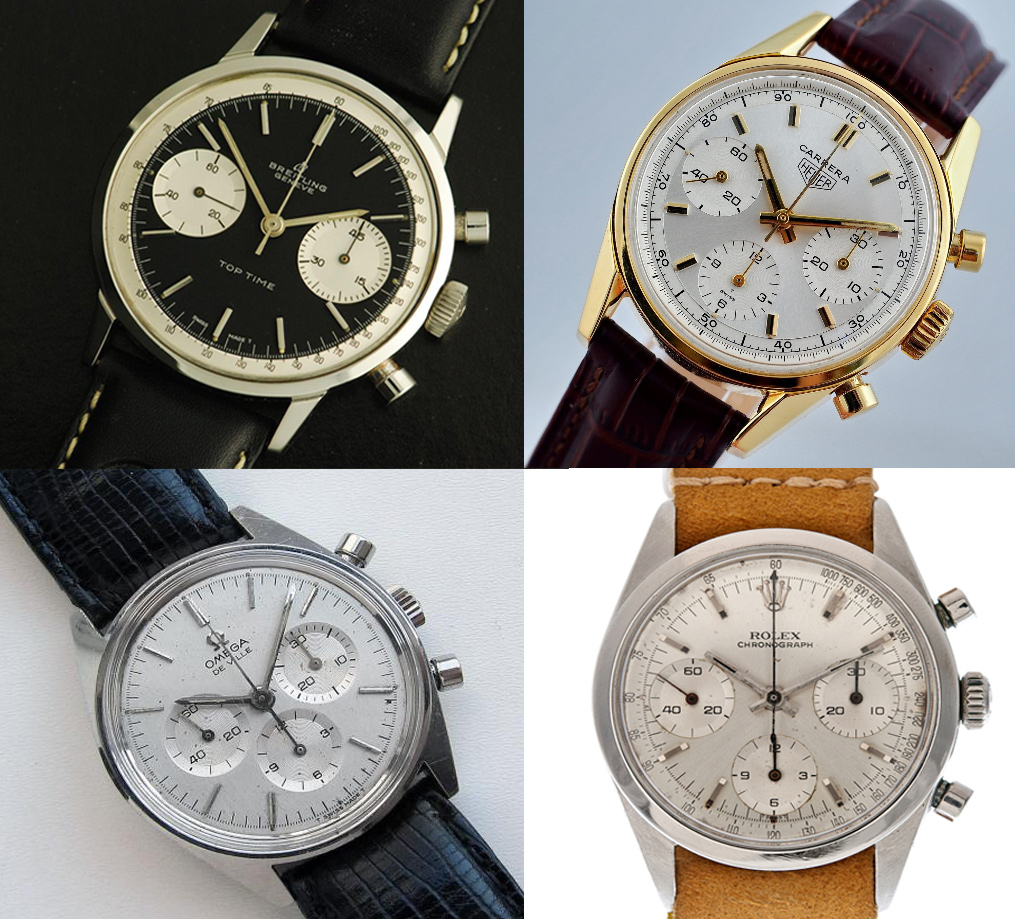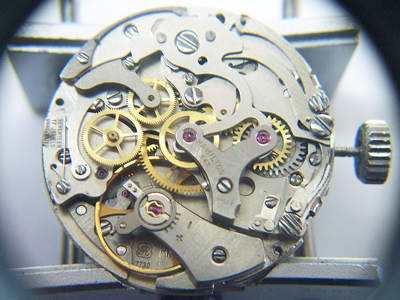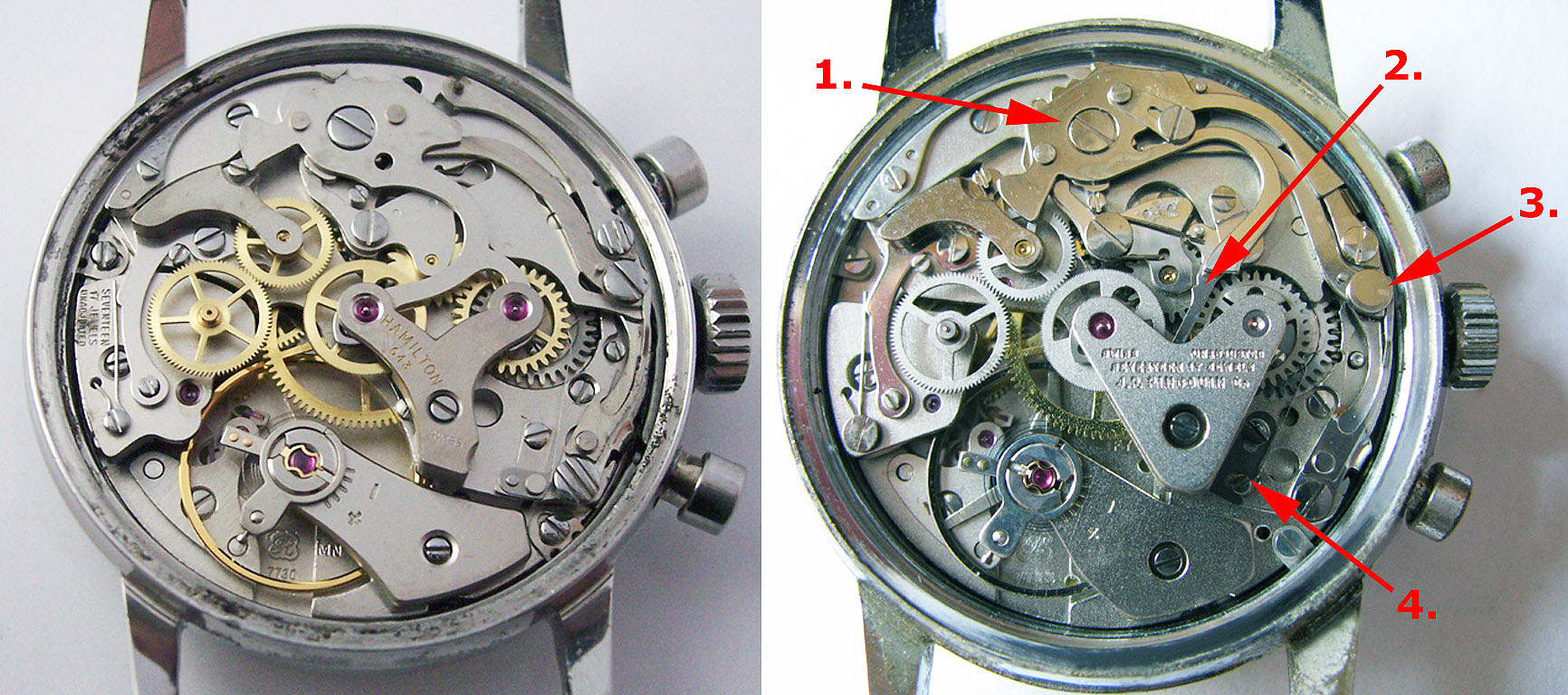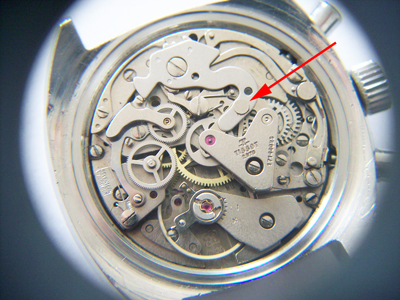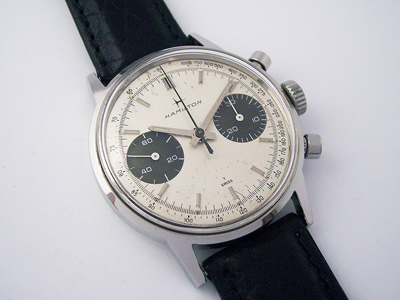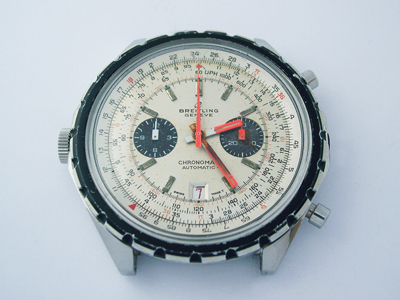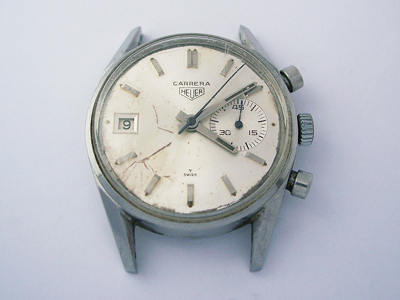Another Hamilton on the blog, this time one of their chronographs from the late 1960’s/early 70’s.
(Click pictures to enlarge)
Before 1970’s styling really kicked in and the design departs were ‘let off the leash’, chronographs from many of the major manufacturers shared the same styling cues as this Hamilton – a simple round case, an uncluttered dial, and standard round head pushers. The resulting watch being functional and stylish.
Automatic chronographs had only been introduced in 1969, so the majority of chronograph calibres were still manually wound, the calibre inside this Hamilton being no exception. Although marked ‘Hamilton 643’ on the chronograph bridge, it is actually a re-branded Valjoux cal. 7730, as can be seen under the balance wheel.
The Valjoux cal. 7730 is almost identical to Venus’ cal. 188, produced from 1948 until 1966. Venus was bought by Valjoux in 1966, and the design for the cal. 188 was used again as the cal. 7730, with only minor changes. Production continued until 1973 by which time, a total of 175,000 units had been made.
Valjoux re-designed the 7730 in the early 1970’s, adding a number of technical improvements, the resulting calibre being the cal. 7733. Here’s a shot of the two calibres side by side with the major differences highlighted.
1. The reset hammer was re-designed and now included an eccentric screw in the centre, allowing the distance between the hammer arms to be increased or decreased, ensuring that correct contact is being made with the reset hearts.
2. A brake mechanism was added to hold the sweep second hand steady after the chronograph has been disengaged. In calibres without a brake mechanism, if the watch is subjected to a shock after stopping the chronograph, it is possible that the sweep second hand may move and the timing result will be be lost.
3. The chronograph operating lever design was changed to make it one unified part rather than two separate arms, and a joining screw.
4. The minute recording jumper spring design was changed to allow correctional adjustment back and forth using an eccentric screw.
As well as developing the 7733, Valjoux also introduced additional calibres to form a series; namely the 7734, adding a date complication, the 7736 with a 12 hour register for the chronograph, and the 7737 which added a sailing timer function. (Click the highlighted calibre numbers for examples of these watches on the blog).
Later in the production run, the design of the reset hammer was changed again. The eccentric screw was removed and replaced with a ‘rocker’ which allowed a small amount of movement and removed any need for correction/adjustment during servicing.
The 773x calibre series proved very popular and were widely used in chronographs of many brands during the 1970’s. The total number of 773x calibres produced is thought to be around 2 million.
Ok, getting back to the Hamilton, it arrived in reasonable cosmetic condition, not running. The watch seemed to be fully wound, but showed no sign of life, which often means that either the oils have congealed, or a part is broken.
As the movement was stripped for servicing, none of the usual causes were found (i.e. a bent/broken pivot or tooth) and it was only when the mainspring barrel was opened that the problem was revealed. The ‘eye’ on the innermost coil of the mainspring had unhooked from the winding arbor, which in turn had jammed inside the mainspring barrel, stopping it dead. So, it was an easy fix this time.
With the movement serviced and back up and running, a little cosmetic work was needed. The dial showed some signs of age which couldn’t be removed, but the appearance was improved by reluming the hands and dial markers. The minor damage on the subdial hands was also repaired, and finally, the case was cleaned and the crystal polished to finish the job.
Rich.
** Many thanks to Alex Keazor for letting me feature his watch on the blog. **

